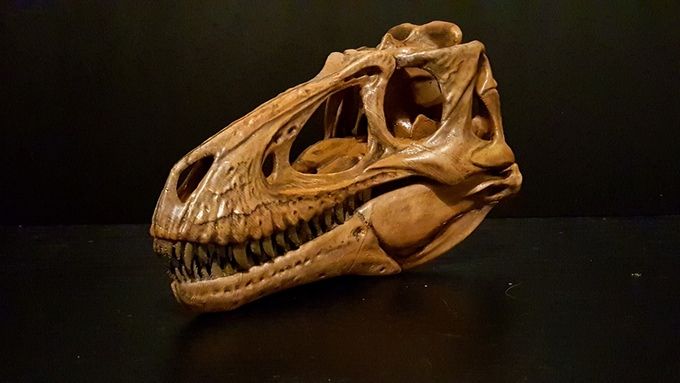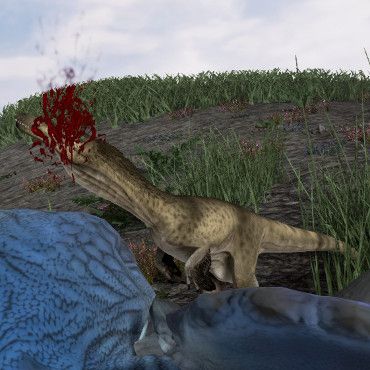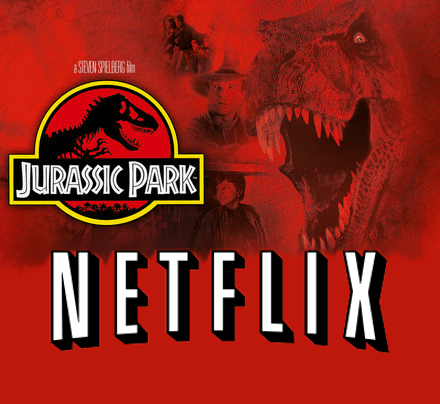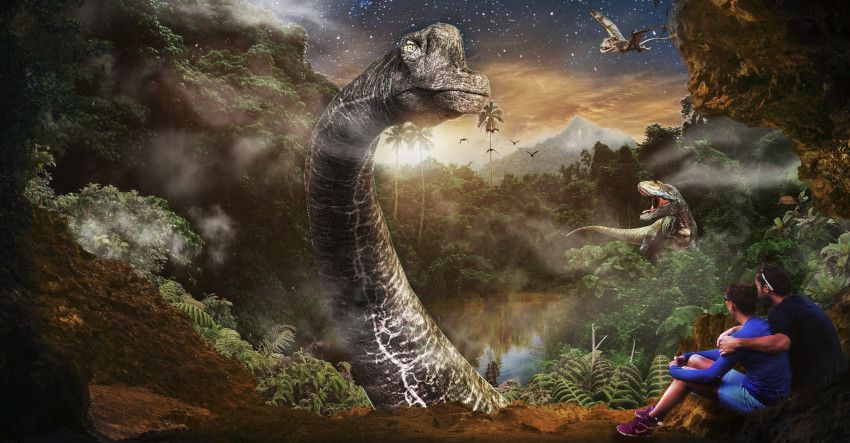
My favorite part about Jurassic World: Fallen Kingdom was the ending. There’s something intensely rewarding about watching those dinosaurs finally getting that kind of freedom. A return to their ancestral homeland after tens of millions of years. Obviously the movie wants you to think about a future where humans and dinosaurs are thrown together, and I’m inclined to indulge that fantasy. With a twist. What would a world with free-roaming, rampaging dinosaurs look like? In an effort to temper that fantasy with reality, I’ve asked some real dinosaur experts, paleontologists from around the world, what to expect should escaping dinosaurs come to our hometowns. I think you’ll enjoy their answers as much as I did.
“As impressive as dinosaurs might seem individually, the poor ones “freed” at the end of JW: FK are sadly doomed. Most of them are the only one of their species, so they won’t be passing on their genes to any offspring. They won’t be adapted to modern habitats, modern diseases, modern climate. (Heck, think of how many animals get turned into roadkill! No dinosaur is going to know properly cross the road…)”
Our first expert, Thomas R. Holtz, Jr., sets the tone with a dose of Realism. Dr. Holtz is the Principal Lecturer of Vertebrate Paleontology, Department of Geology at University of Maryland. He sort of spun my question on it’s head, approaching it from the perspective of dinosaurs reacting to humans. A little gloomy, but valid nonetheless.
“Most importantly of all, we humans are spectacularly good at killing. Once one of the Jurassic World dinos kills a child or causes an accident in the general public (not among weapons profiteers and ultra-rich sports hunters meeting in secret…) the world is going to hunt them down. So what is supposed to look like a moment of liberation is dooming the poor critters.”
The choice posed towards the end of the movie, to press the button and free the innocent dinosaurs, or doom them to an undeserved fate, would be a real moral dilemma. Letting them loose certainly has its consequences as Dr. Holtz outlined, most especially for the dinosaurs. For another example, look at the problem facing the everglades in Florida. That entire ecosystem is being wrecked by unwanted pets being dumped into a place they were never meant to be. Ball pythons are chowing down on the alligator population, vying for apex predator supremacy. Loose dinosaurs could have a similarly large effect on humans. Luckily Dr. Holtz did provide some actionable advice for encountering wild dinosaurs.
“The best way to deal with them is to leave them alone. The second best way is to leave them (i.e., to get away from them). Our vehicles are far faster than these dinosaurs. And when in doubt, when being pursued by a hungry carnivorous dinosaur, use the buddy method: you don’t have to be faster than the dinosaur, you just have to be faster than your buddy…”
Great advice for us. Awful advice for our buddies.
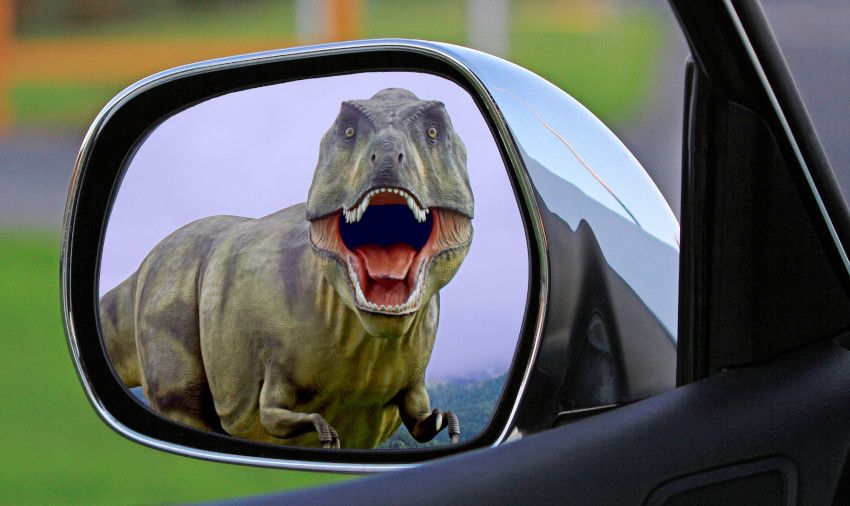
Next up is some advice that hits close to home. Literally. Dr. Holly Woodward Ballard is an Assistant Professor for the Department of Anatomy and Cell Biology at Oklahoma State University Center for Health Sciences. She is also an expert in Maiasaura, so I asked her for some species-specific advice. Afterall, the hungry carnivore is an obvious problem, while the problems of an herbivorous nature are a little less clear. “If a herd of Maiasaura decide to turn your backyard into a nesting ground, get used to your new neighbors. They won’t be going anywhere for a few months while they guard their nests and later feed their helpless young.”
It’s like cranking the concept of a bird feeder up to eleven. You get to watch juvenile dinosaurs from eggs to hatchlings, romping around from your kitchen window. The actual baby-making part might not be great dinner theater, but the rest would make for an incredible opportunity to watch the behavior of Maiasaura, or any dinosaur in general. How do the parents build the nest? How long after birth until the little tykes are ready to be on their own? The bad news is, the family dog will have to start using the front yard. I don’t think the dinosaurs would be very interested in coexisting in many cases. As a general law of physics, two objects can’t occupy the same space at the same time. When a huge dinosaur and a tiny human want to be in the same space, the larger of the two wins. (Clearly cats are the exception to this rule, as every cat owner ever can attest to). As a general law of nature, provoking expecting parents never ends well. See previous rule for details.
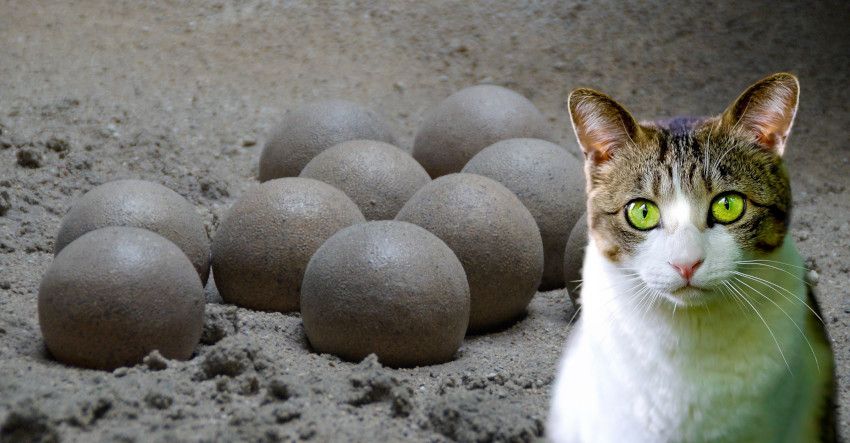
Stephen Brussate, a paleontologist with the University of Edinburg, School of GeoSciences, and author of the new book “The Rise and Fall of the Dinosaurs” was also gracious enough to provide some useful advice. “My one tip would be to not overreact and think of dinosaurs as monsters, but rather to study the behaviors of modern animals like tigers and elephants and use what you’ve learned to figure out how to best deal with the dinosaurs.”
This would take a little foresight on your part, to do a little studying and prepare for the dinopocalypse in advance. Wild animals all share a common goal: survival. They would likely be reacting to humans as they would any other threat in nature. It doesn’t take a degree in zoology to know how to react to a loose tiger or elephant. In more urban settings you can still run into similar situations with coyotes or bears. Give nature some respect, especially when it’s bigger than you. Keep your eyes peeled, and your trash can sealed. Make sure you aren’t doing the land equivalent of chumming for sharks.
Dean R. Lomax, Palaeontologist for the School of Earth and Environmental Sciences at the University of Manchester, initially seemed a little excited when I contacted him. “This sounds cool. …try to avoid getting eaten.”
Luckily he shared more than his sense of humor.
“Seriously, though, chances are if you can outsmart a potential predator then you’ll survive. It’s the basic fundamentals of natural selection. That and don’t get too close to any predatory dinosaurs.”
Lots of advice about avoiding dinosaurs. I think we can call it a pattern at this point. Outsmarting a predator doesn’t always mean running away. There’s lots of examples in the Jurassic franchise of this, for example locking the Velociraptor in the freezer in Jurassic Park. Ideally the dinosaurs never make it into your home, but clever girls and all that. Mr. Lomax also offered this parting bit of advice, which requires no explanation:
“Oh, and always pay attention if near the tail end of a Stegosaurus. Ouch.”

Our final expert continues to build on the advice we’ve been given so far. Dr. David W.E. Hone is the Senior Lecturer for Zoology in the School of Biological and Chemical Sciences at Queen Mary University of London. He offers some pretty straightforward and practical survival advice for your next dinosaur encounter.
“…get into a single small space in a building that would be hard to access. Something like a garage would be good. It’s a small concrete space that large dinosaurs would not be able to fit into, even if they broke down the door, and a small dinosaur would have trouble operating the handle or breaking past a metal barrier. Sit quietly and there should be enough smells around such that you can’t be easily detected. As a bonus, there’s few garages that don’t have something in you can use to help further either a car to get into, boxes to get behind or use to block the door, or tools to use as defence.”
Layers of security isn’t a new concept, and Dr. Hone’s application here gives us a little insight into the intelligence of dinosaurs. Whether or not they would be as smart as they were in the movies, able to puzzle out how to open doors, would be an interesting process to watch unfold. Hopefully not at your front door though, or through your Ring camera. Still, you may want to have door knobs and not handles installed throughout your home. Life finds a way.
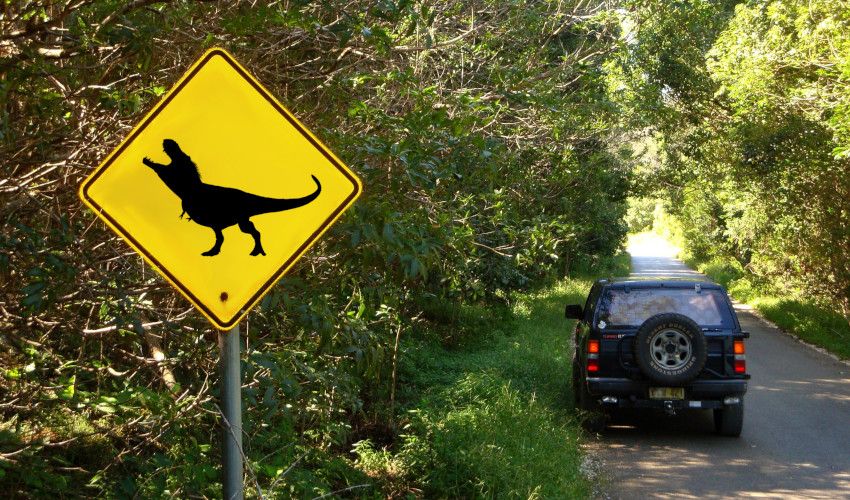
That wraps up your crash course in surviving dinosaur encounters. I want to give a HUGE thank you to the experts above for taking the time to respond to my emails. I wanted to put together something that was fun, but still informative and worthwhile to read. Getting perspectives like this is a really great opportunity. The concept of dinosaurs and man being forced together isn’t something new, but hopefully you can make more informed decisions in case of a real dinopocalypse. Do you have a tip for surviving the dinosaur apocalypse? Leave it in the comments below. While hide and avoid seem to be the most suggested strategies, we’ve learned that dinosaurs likely acted a lot like animal species of today. A little awareness about animals today can save your life, and the lives of the dinosaurs too. With the potential of a chickenosaurus escape on the horizon, you never know when this might actually come in handy.

